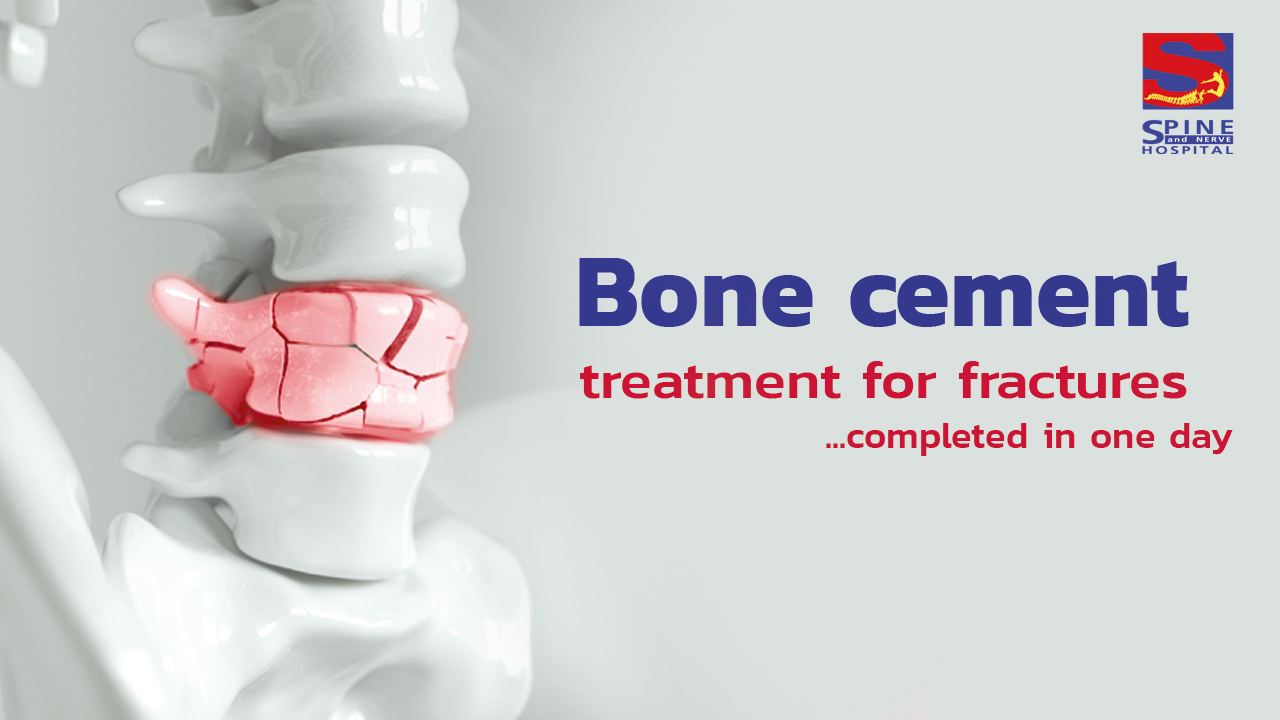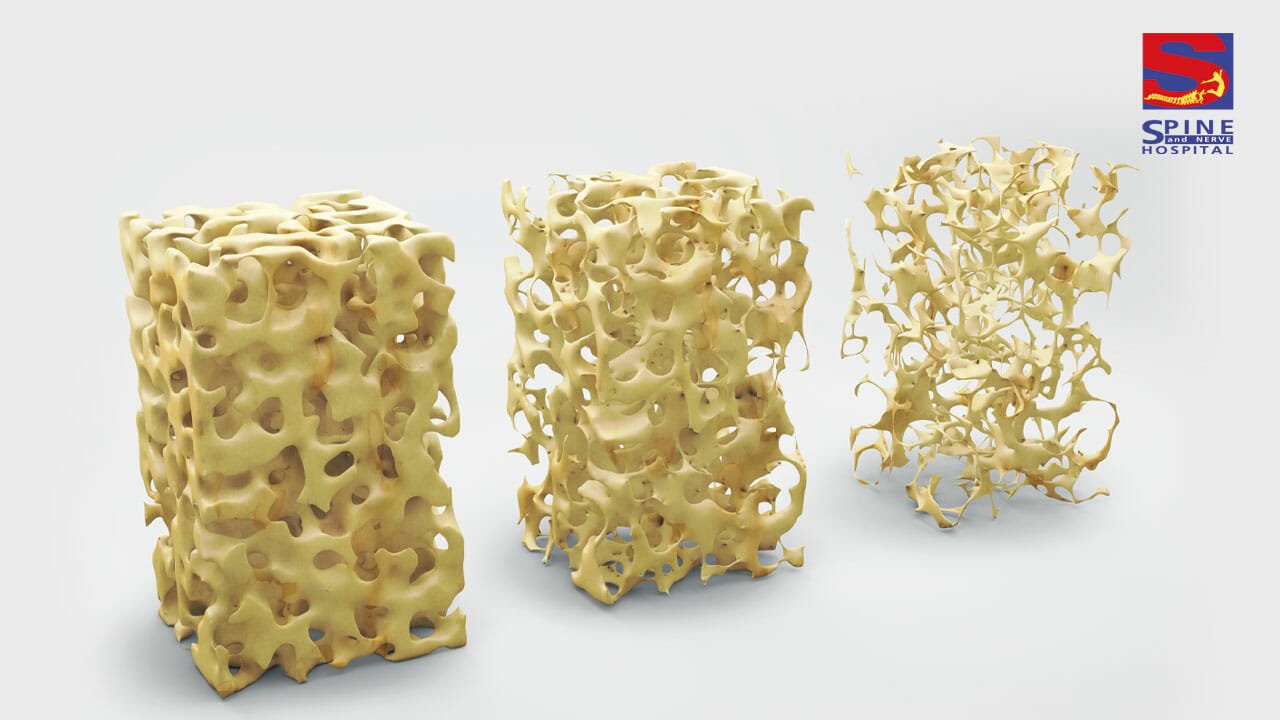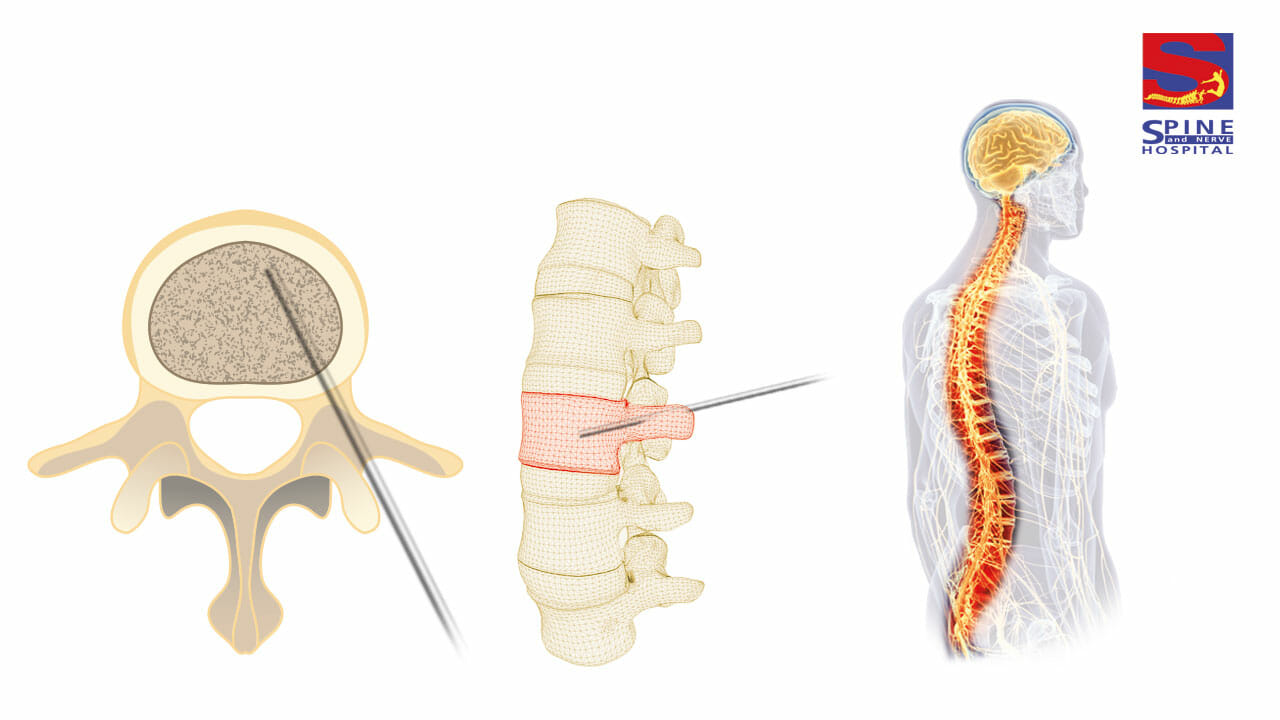Bone cement treatment for fractures…completed in one day

Bone cement injection is an alternative treatment for spinal fractures, cracks, and collapses for patients who do not wish to undergo surgery. This method has a very high success rate and helps patients recover from pain, allowing them to return to their normal quality of life.
Diseases or conditions that can cause spinal fractures, cracks, or collapses include:
- Osteoporosis
- Traumatic accidents
- Falls from heights
- Presence of tumors within the spinal bones
If any of the above causes occur, some patients may experience varying degrees of pain depending on the severity of the condition. In cases where the pain is severe and unbearable, it is advisable to promptly consult a specialist doctor to reduce the risk of developing complications such as spinal instability, spinal deformity, and nerve compression.

The diagnosis process.
In order to treat the underlying cause of a spinal fracture, the doctor will conduct an appropriate diagnostic examination, including an X-ray, which can visualize the bone structure, and an MRI to assess the spine and various nerves. These diagnostic tests are essential in making informed decisions for treatment planning.
• Standing MRI: This diagnostic procedure helps identify the cause of back pain.
Treatment approaches:
- General treatment:
Taking medication to alleviate back pain and prevent stiffness of the spine. Wearing a brace to limit the movement of the spine during the recovery process. If symptoms do not improve or the pain is unbearable after two weeks, it is advisable to promptly consult a specialist in spinal injuries. - Cement injection:
Cement injection is a non-surgical technique used for patients with back pain and spinal deformities caused by spinal fractures. It is also used when there are tumors in the spine or spinal injuries. In this procedure, cement is injected into the collapsed, fractured, or broken vertebrae to reinforce the strength of the fractured spine, allowing it to bear weight again.
After receiving the treatment, it is important for patients to follow the post-operative instructions provided by the physician for a sustainable recovery.
• After surgery, here are some guidelines to follow
Steps for Cement Injection
The doctor will use a small-sized needle and a special X-ray machine called a fluoroscope to locate and puncture the area where the fractured, cracked, or collapsed spinal bone is. They will then gradually inject cement in small amounts to prevent it from leaking out of the bone. The doctor will wait for the cement to harden and then remove the needle, using plaster to cover the wound. Since the wound is small, stitches are not necessary.

The patient will need to rest and recover for 1–2 hours to allow the injected cement to solidify. Afterward, they can resume normal activities such as sitting, standing, and walking, and the pain should improve after the injection. This procedure must be performed by a specialized doctor with expertise in spinal procedures.









